#civilian conservation corps
Text

probably a CCC (Civilian Conservation Corps) worker
21 notes
·
View notes
Text



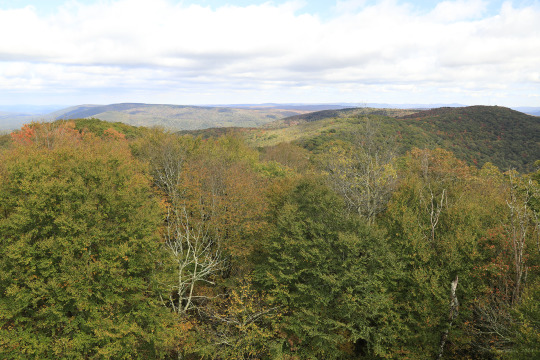



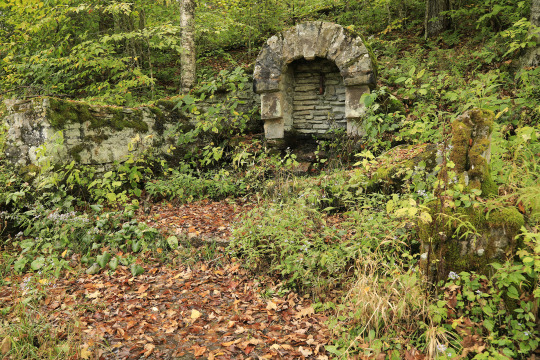




Bickle Knob is the high point on Forest Road 91 in the Monongahela National Forest, which traverses some of the wildest and most beautiful areas of the Allegheny Mountains. Depending on which end you enter, the gravel road starts or finishes with the Stuart Recreation Area and the Otter Creek Wilderness. Bickle Knob rises roughly halfway between the two, with Bear Heaven Campground squeezed into a sharp bend on the descent from the top of the mountain. Bickle Knob is most notable for hosting one of the few remaining forest service fire towers in West Virginia, which is accessible to the public. The original cab has been removed and replaced with an open viewing platform. Views are breathtaking in all directions. The tower and other facilities in the area were built by the Civilian Conservation Corps (CCC) in the early days of the national forest system. The most evident artifact, aside from the fire tower, is the gorgeous stonework of an historic water well located along the road, a memorable legacy from a day and an age when hand-carved and constructed edifices were both a necessity and an artform; they need to be restored and protected for future generations.
#appalachia#vandalia#west virginia#wildflowers#flora#allegheny mountains#fall#bickle knob#forest road 91#otter creek wilderness#stuart recreation area#monongahela national forest#civilian conservation corps#artifacts#human hisory#natural history#blue wood aster#crooked-stemmed aster#fire tower
118 notes
·
View notes
Text

CCC; "Ephraim Counser at Mt. Morris Camp"; N.Y
Collection FDR-PHOCO: Franklin D. Roosevelt Library Public Domain PhotographsSeries: Franklin D. Roosevelt Library Public Domain Photographs
A black and white photograph of an older man in the uniform of the Civilian Conservation Corps, a jacket over a shirt and tie and a side cap. He is looking directly at the camera and holds an ax or hatchet over his shoulder.
#archivesgov#November 16#1933#1930s#great depression#new deal#civilian conservation corps#Mt. Morris#upstate ny#upstate new york
50 notes
·
View notes
Text

At one of the Civilian Conservation Corps (CCC) camps, in the Loyalsock State Forest.
"Located along the banks of the Loyalsock off of Rock Run Road. The Loyalsock Camp put in a tremendous amount of work in helping create Worlds End State Park. The swimming- area dam, picnic shelters, and cabins were all a result of their efforts. This camp was in existence from 1933 to 1941." via DCNR eLibrary
#lunaladee photos#old stone fireplaces#civilian conservation corps#CCC camps#10.06.23#original photography#photographers on tumblr
18 notes
·
View notes
Text
Mountain Memories: CCC Camp Life
Mount Rainier National Park had six Civilian Conservation Corps (CCC) camps operating during the 1930s. Each camp hosted 200 men, who returned after a hard day’s work to rest and refuel. A typical breakfast was oatmeal with canned Hawaiian pineapple while dinner might be beef stew, garden vegetables, and mashed potatoes. Recreation included baseball and other sports, reading, and music. The US Army provided discipline in the camps, while park rangers gave naturalist talks and led fishing and hiking excursions.
Mount Rainier National Park Archives Footage (mora_24690, excerpt of “Emergency Conservation Work in Mount Rainier National Park”). No audio. Available with audio description at https://go.nps.gov/MMem-CCCCampLife. ~kl
15 notes
·
View notes
Link
Excerpt from this Washington Post story:
Soon after taking office, Biden signed an executive order that called for creating a Civilian Climate Corps. The federally funded initiative was aimed at hiring tens of thousands of young people to pursue climate-friendly projects such as restoring wetlands, installing solar panels and removing invasive species.
The program was designed to resemble the Civilian Conservation Corps, the New Deal-era initiative that put millions of young men to work planting trees, constructing trails and making improvements to the nation's infrastructure.
Congressional Democrats provided up to $30 billion in funding for a Civilian Climate Corps in an early version of their sweeping climate and social spending package, formerly known as the Build Back Better Act. But the program was dropped from the final version of the climate package, dubbed the Inflation Reduction Act, during private negotiations between Senate Majority Leader Charles E. Schumer (D-N.Y.) and Sen. Joe Manchin III (D-W.Va.).
The Civilian Climate Corps proposal was hugely popular. Recent polling from the Yale Program on Climate Change Communication found that 83 percent of Americans support reestablishing the New Deal-era Civilian Conservation Corps.
“The Civilian Climate Corps was one of the most popular parts of the Build Back Better proposal,” Sen. Edward J. Markey (D-Mass.), who introduced legislation to create the corps with Rep. Alexandria Ocasio-Cortez (D-N.Y.), said in an interview Wednesday.
“It's something obviously that Congresswoman Ocasio-Cortez and I fought hard for,” he said. “So we're going to find other avenues. We don't have a specific legislative strategy yet. But we're not going to give up on it.”
Markey also tacitly acknowledged that the program could help mobilize young people to vote for Democrats in November's midterm elections.
Some Democrats are eyeing the annual appropriations bills as another avenue for creating the Civilian Climate Corps — albeit at a much lower funding level than $30 billion.
Some environmentalists are also taking solace in the fact that the Inflation Reduction Act includes two provisions that would accomplish similar goals as a Civilian Climate Corps.
The law provides $500 million for the Park Service and the Bureau of Land Management to pursue conservation and ecosystem restoration on public lands.
An additional $500 million is earmarked for the Park Service to hire new employees.
“There's a lot in the IRA that looks like a Civilian Climate Corps in everything but name,” said Lena Moffitt, chief of staff at the climate advocacy group Evergreen Action.
59 notes
·
View notes
Text
Cabin trip report
Back home; the trip was a success! It did indeed rain as expected most of the weekend, but Thursday was lovely, and Saturday was just intermittently drizzly, so we were able to get in a couple of good walks and a campfire in the evening. On the the other days, well, the cabin kept the rain off and had good heat.
A few cabin pics below the cut:

Here's the cabin! It's another of the CCC-built rustic cabins that they have in state parks throughout Pennsylvania. The main room is all exposed stone inside, and then there's a little wood-paneled bedroom.
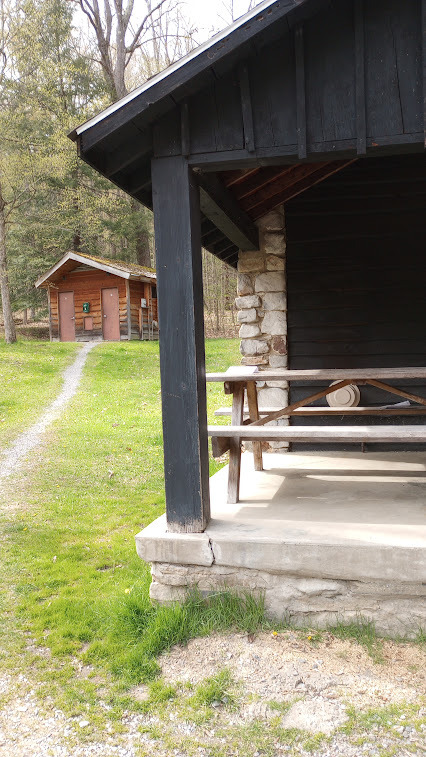
The little hut in the background is the bathroom--back when these old cabins were built, plenty of people didn't have an inside bathroom at home, so the cabins are not plumbed. Most of the parks have campground-style communal ones, but at this park you get your own. Each little building has a separate private bathroom for each of two cabins.
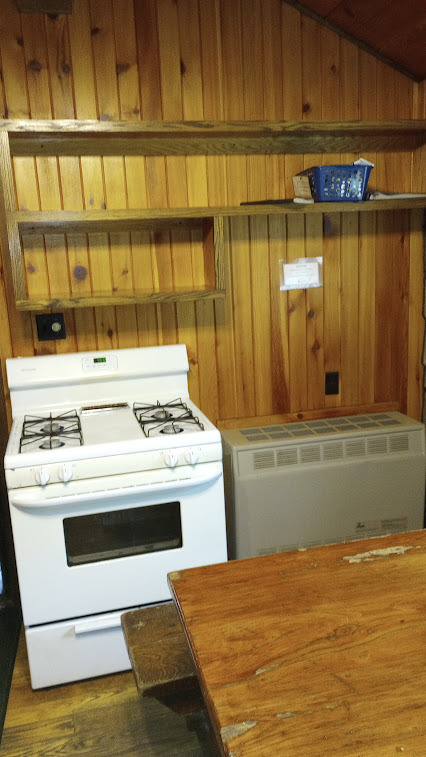
Inside, against the front wall is the stove and a wall heater, with some shelves for your kitchen things. The wall unit puts out a lot of heat, which is good because it was fairly cold during my stay. (About 40-50 degrees Fahrenheit, or 5-10 Celsius, at night, and not much warmer during the day, except the first day.)

Opposite the wall heater is the fridge, with a big wooden table in between. The stone wall along the side has a good-sized window.
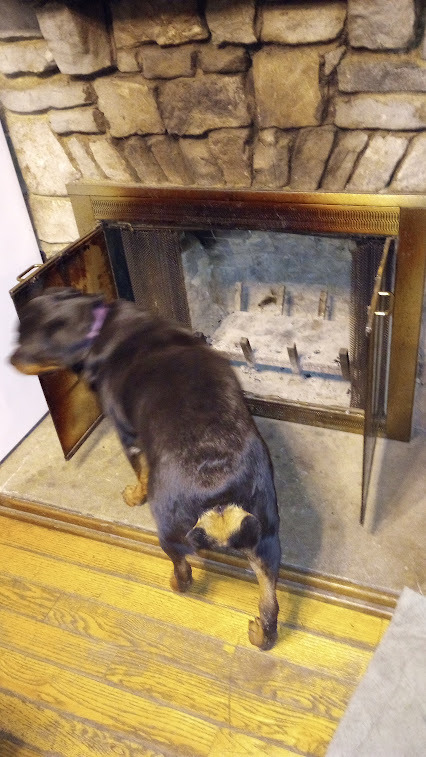
Next along the back wall is the fireplace! Sophie was fascinated by this; our cabin from her first camping trip in the fall didn't have one.
Turn slightly to the right, and here's the bedroom:
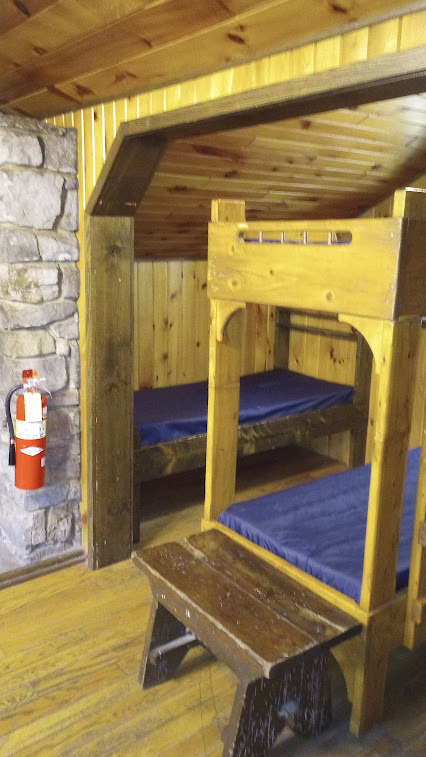
There's a set of bunk beds in the middle, and two single beds on either side, where the roof slopes down. I took the bunk on the left there, and made up the middle one for Sophie:

But she preferred to sleep on the floor:
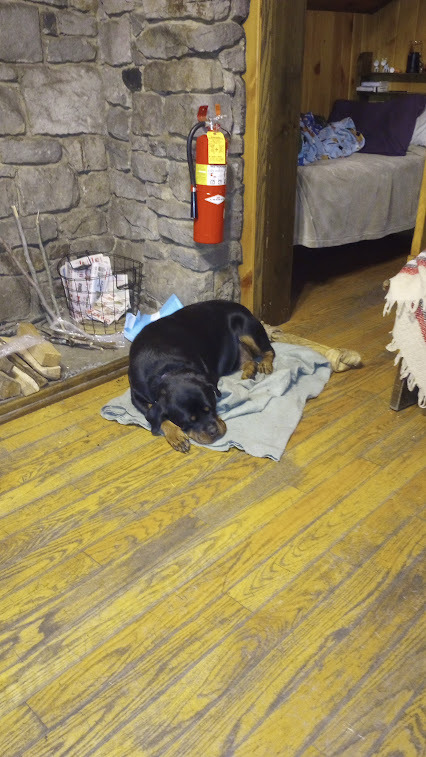
Here is another shot of the kitchen area:

With my dishwashing setup. I fill the tin pail at the outside tap, then heat some of the water in the saucepans. The blue bowl is the dishpan, and then the remaining water in the bucket is for rinsing. Dishes are laid out on a tea-towel to dry. It's not bad for the dishes accumulated by one person cooking mainly over the fire, using foil packets and toasting forks, but I can see how it would pall if you were trying to keep up with the dishes for a family of four.
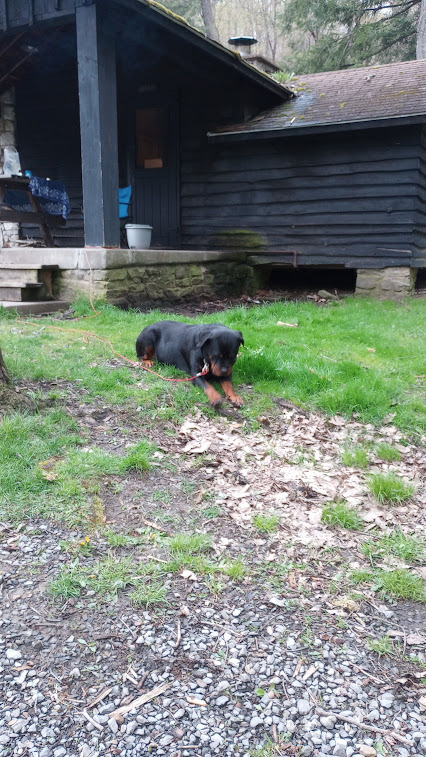
Here's the bedroom from the outside, with a bonus Sophie!
And the view from the porch:

I didn't take too many pictures apart from the cabin--because it was mostly raining and I didn't want to get my phone wet--but I have a few I can share if people are interested.
14 notes
·
View notes
Text
Civilian Conservation Corps Company 793 built the Mitchell Dam and Heliport in Hill City, SD which still stand today.
3 notes
·
View notes
Photo

April 05, 1933-- FDR creates Civilian Conservation Corps
"On April 5, 1933, President Franklin D. Roosevelt establishes the Civilian Conservation Corps (CCC), an innovative federally funded organization that put tens of thousands of Americans to work during the Great Depression on projects with environmental benefits.
In 1932, FDR took America’s political helm during the country’s worst economic crisis, declaring a “government worthy of its name must make a fitting response” to the suffering of the unemployed. He implemented the CCC a little over one month into his presidency as part of his administration’s “New Deal” plan for social and economic progress. The CCC reflected FDR’s deep commitment to environmental conservation. He waxed poetic when lobbying for the its passage, declaring “the forests are the lungs of our land [which] purify our air and give fresh strength to our people.”
The CCC, also known as “Roosevelt’s Tree Army,” was open to unemployed, unmarried U.S. male citizens between the ages of 18 and 26. All recruits had to be healthy and were expected to perform hard physical labor. Blacks were placed in de-facto segregated camps, although administrators denied the practice of discrimination. Enlistment in the program was for a minimum of 6 months; many re-enlisted after their first term. Participants were paid $30 a month and often given supplemental basic and vocational education while they served. Under the guidance of the Departments of the Interior and Agriculture, CCC employees fought forest fires, planted trees, cleared and maintained access roads, re-seeded grazing lands and implemented soil-erosion controls. They built wildlife refuges, fish-rearing facilities, water storage basins and animal shelters. To encourage citizens to get out and enjoy America’s natural resources, FDR authorized the CCC to build bridges and campground facilities. From 1933 to 1942, the CCC employed over 3 million men.
Of Roosevelt’s many New Deal policies, the CCC is considered by many to be one of the most enduring and successful. It provided the model for future state and federal conservation programs. In 1942, Congress discontinued appropriations for the CCC, diverting the desperately needed funds to the effort to win World War II."
- History.com
This Civilian Conservation Corps Ring from 1940 can be found in the online collection of the National Museum of Forest Service History.
#this day in history#ccc#Civilian Conservation Corps#US Forest Service#Forest Service#Museums#history museums#PastPerfect#PastPerfect Online#Online Museum Collections#Montana Museums#US Museums#history#US History
5 notes
·
View notes
Text




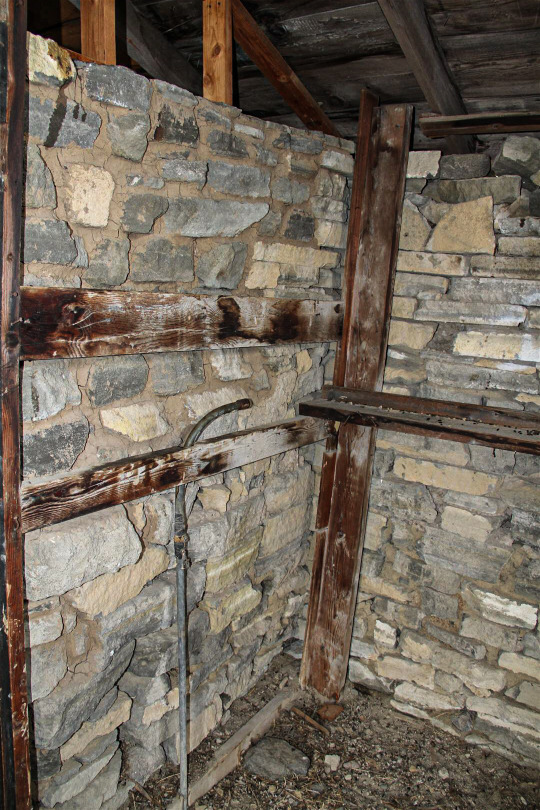



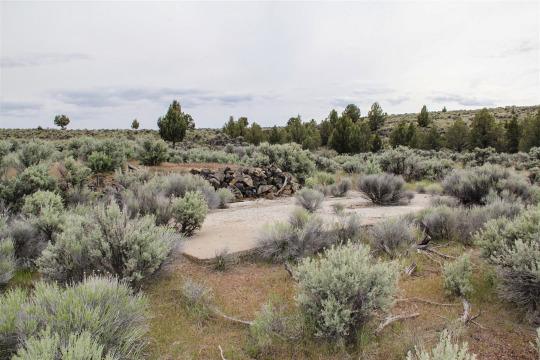
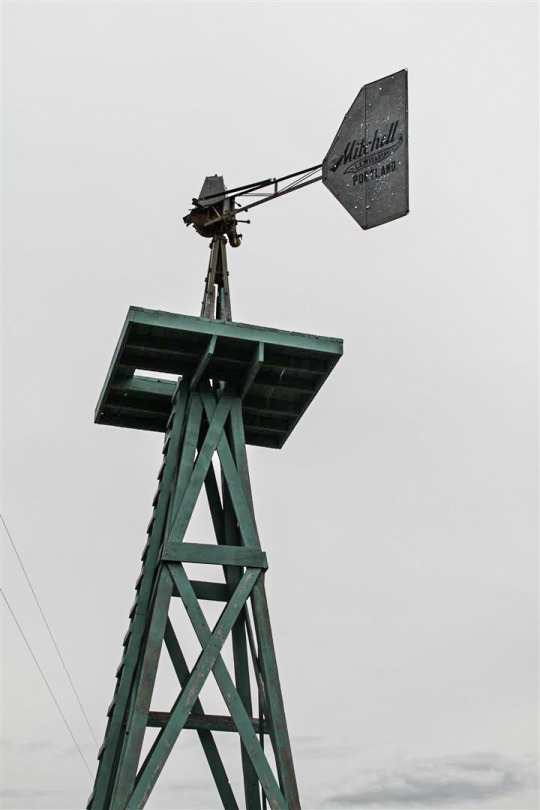


The Gap Ranch - June, 2011
Civilian Conservation Corp Camp Location in Harney County Oregon
The windmill was filled with rats.
Copyright Al Dee Sollinger (Used with Permission)
#civilian conservation corps#bureau of land management#ccc#windmill#harneycounty#oregon#eastern oregon#the great pnw#the old west#oregonoutback#pnw#oregon outback#burns oregon#the high desert#the pacific northwest
6 notes
·
View notes
Text
Today i visited Silver Falls State park here in Oregon, and it got me thinking about the CCC.
The CCC--Civilian Conservation Corps--built the park during the Great Depression. Young men unable to get other jobs were hired to build state and national parks. They got "three hots and a cot", and $30 a month, $25 of which was sent home to their family. It was a great program, a literal lifeline for a lot of these young men and their families.
But then there's...it's not quite Fridge Horror, but definitely food for thought. I love the parks built by the CCC. I love knowing that the lodge I ate lunch at today was the first building those young men built, the original camp kitchen. The bridges and stonework in the park are beautiful. There's a swimming hole still in use, undoubtedly built by hot, bored young men to cool off. But....
Why Silver Falls?
Silver Falls is 12 miles from Stayton, the closest town, 15 miles from Silverton, 25 miles from Salem, and 57 miles from Portland. By car they're all easy drives, but none of the guys had cars, and I doubt many of them even had bicycles. They were isolated in the woods, away from city centers, a four hour walk each way from the nearest town.
Away from union organizers and political "agitators".
At Silver Falls alone, two hundred of the young, able-bodied, and desperate were removed from the cities, removed from potential riots, revolutions, and political unrest, all for the cost of food and a dollar a day. The camps didn't even need guards, because the men's families were hostage to the $25 a month that they sent home. At its height, half a million young men were enrolled in the program. Voluntarily.
After the US joined WWII, the CCC was (mostly) disbanded. Many of its participants became corporals and sergeants in the army after enlisting or being drafted. Some of the camps were repurposed as POW prisons.
The CCC, WPA, and other parts of Roosevelt's New Deal were important, life saving, and as progressive as you were going to get at the time. They were also effective (and deliberate) countermeasures against a socialist, communist, or fascist revolution.
It made for an odd walk through the woods.

One of the ten waterfalls along the main trail. Plus one of the umpteen bridges built by the CCC. Not my photo.
3 notes
·
View notes
Text
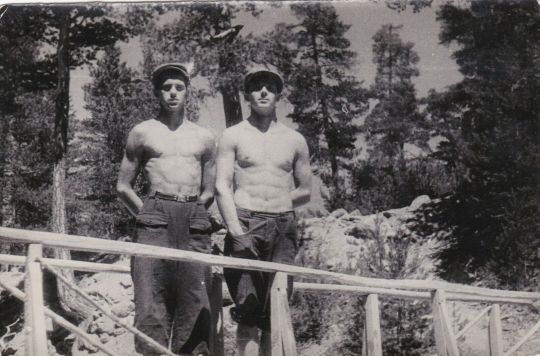

CCC boys working at an experimental farm, ca 1935
66 notes
·
View notes
Text
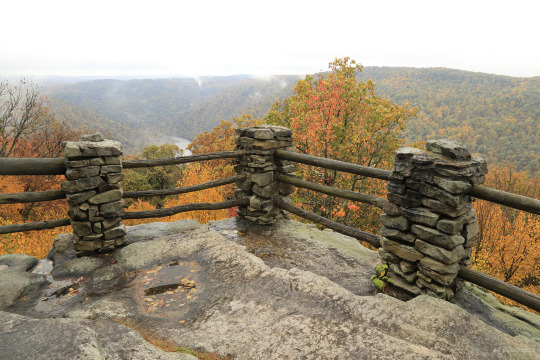
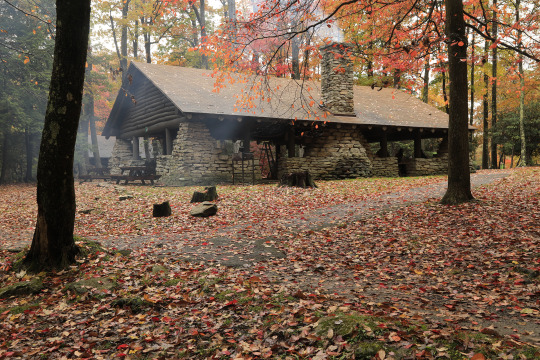





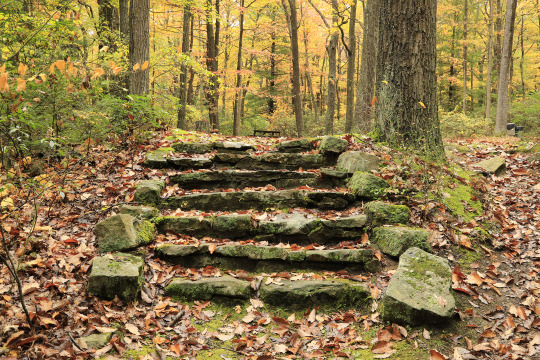
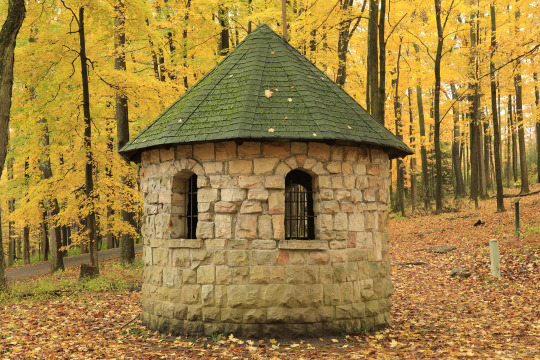
The Civilian Conservation Corps (CCC) was established as part of the New Deal in 1933 to help lift the United States out of the Great Depression. Single men between the ages of 18 and 25 were eligible to join the Corps, which undertook a variety of programs to improve the nation's parks and forests, many of which were newly formed. Coopers Rock State Forest was one of the earliest benefactors of the program, with many of the Corps' signature log and stone structures still standing nearly a century later.
#appalachia#vandalia#west virginia#civilian conservation corps#new deal#coopers rock state forest#franklin delano roosevelt
96 notes
·
View notes
Text

CCC boys planting trees, March 3, 1933.
Record Group 142: Records of the Tennessee Valley Authority
Series: Historic Photographs
File Unit: Historic Photographs
Image description: Two young men bend to use mattocks on the ground. They are in a large open area. Near each is a rectangular trug basket that holds saplings.
#archivesgov#March 3#1933#1930s#Great Depression#CCC#Civilian Conservation Corps#Tennessee Valley Authority#TVA#gardening#trees
54 notes
·
View notes
Text
This is now on repeat.
2 notes
·
View notes
Text
Mountain Memories: CCC at Work
During the 1930s, Civilian Conservation Corps (CCC) crews worked at Mount Rainier National Park. Duties included clearing roads and trails of debris and fallen trees, planting landscaping around new buildings like the Sunrise Blockhouses at Yakima Park, and improving trails with rock walls and other enhancements. Evidence of CCC work can still be found throughout the park today.
Mount Rainier National Park Archives Footage (mora_24690, excerpt of “Emergency Conservation Work in Mount Rainier National Park”). No audio. Available with audio description at https://go.nps.gov/MMem-CCCatWork. ~kl
#Mountain Memories#mount rainier national park#CCC#Civilian Conservation Corps#history#black and white film
14 notes
·
View notes